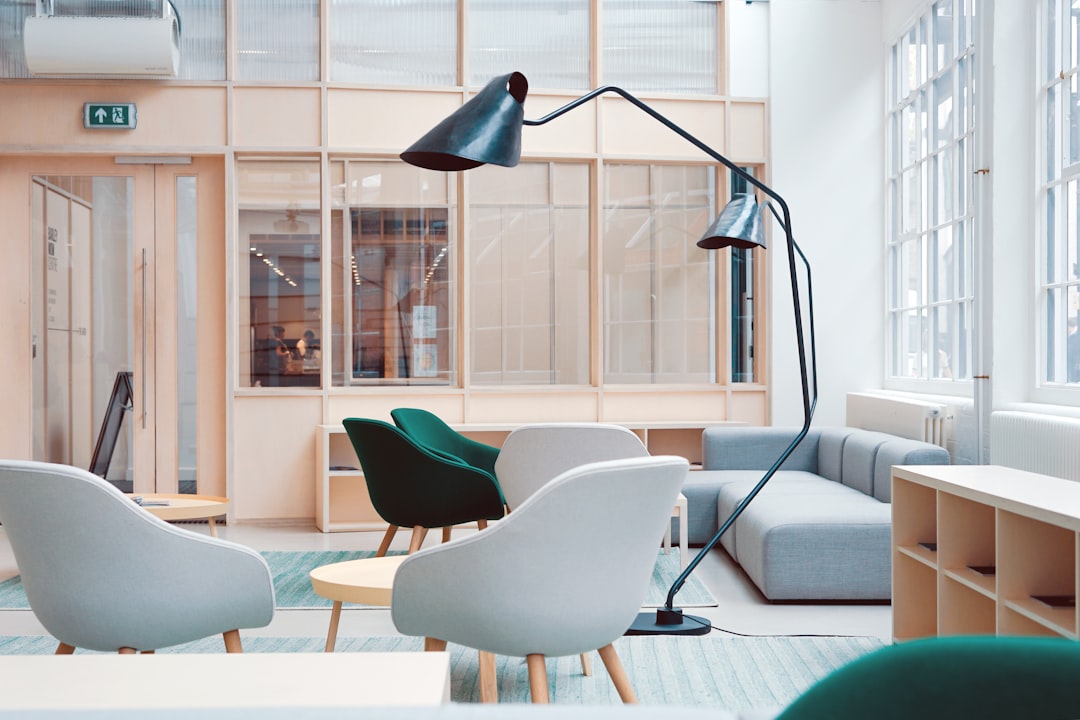The demand for skilled interior designers is growing fast. The Bureau of Labor Statistics predicts a 5% growth in jobs from 2020 to 2030.
Exploring interior design, we see how career prospects and salaries change. Your pay can differ a lot. This depends on where you work, how long you’ve been doing it, and the industry you’re in.
Knowing about interior design salaries helps us make better career choices. This article will give you a clear view of what you can earn in this field.
Key Takeaways
- Understanding the factors that influence salaries in the interior design industry.
- Exploring the various career prospects available to interior designers.
- Discovering the earning potential in different sectors of the industry.
- Learning how location and experience impact salary.
- Gaining insights into the future growth of the interior design field.
Understanding Interior Design Salaries in the U.S.
Interior design salaries in the U.S. vary based on several key factors. We’ll dive into these factors. Knowing them helps designers plan their careers and employers offer fair pay.
What Determines Salary Levels?
Several factors affect interior designer salaries. Experience is a big one. More experienced designers earn more due to their skills and portfolio. Specialization also matters; designers in high-demand areas like sustainable design or luxury earn more.
The Bureau of Labor Statistics reports a median salary of $56,040 for interior designers in May 2020. Salaries range from $30,000 for newbies to over $100,000 for senior designers or those running their own firms. For more salary details, check this resource.
Average Salaries by Experience Level
Experience greatly influences interior designer salaries. Here’s a salary breakdown by experience level:
- Entry-level (0-3 years): $40,000 – $55,000 per year
- Mid-level (4-7 years): $55,000 – $75,000 per year
- Senior-level (8-12 years): $75,000 – $100,000 per year
- Lead/Principal designers (13+ years): $100,000 – $150,000+ per year
These figures are estimates and can change based on location and employer.
Comparing Salaries Across States
Where you live affects your salary. States like California and New York offer higher pay due to higher living costs. For example, designers in California can make $65,000 to over $100,000 a year, depending on their experience and location.
In contrast, states with lower living costs may pay less. Knowing the interior design employment outlook and salary trends in different areas helps designers plan their careers.
Different Types of Interior Design Jobs
The interior design world is full of different jobs. Each one fits different interests and skills. There are many specialties, each with its own challenges and chances.
Residential Interior Designers
Residential designers make homes and apartments look good and work well. They pick colors and materials and make sure everything is installed right. They work with homeowners to make their dream spaces come true, making sure they are both pretty and practical.
Commercial Interior Designers
Commercial designers focus on places like offices and restaurants. They aim to make spaces that look good and help people work better. They think about branding, how people move around, and being green. It’s about understanding how design affects us.
Specialized Roles in Interior Design
There are many special jobs in interior design too. Some examples are:
- Sustainable designers who focus on green design
- Universal designers who make spaces for everyone
- Lighting designers who create the right lighting
These jobs show how wide the field of interior design is. By focusing on one area, designers can become experts and stand out.
| Type of Designer | Primary Focus | Key Skills |
|---|---|---|
| Residential Interior Designer | Designing homes and apartments | Understanding client needs, space planning |
| Commercial Interior Designer | Designing offices, restaurants, and retail spaces | Branding, traffic flow, sustainability |
| Sustainable Designer | Eco-friendly design practices | Knowledge of sustainable materials, energy efficiency |
The interior design field is always changing. There will be more jobs for skilled people in different areas. Knowing about these jobs helps people choose the right path for their careers.
Factors Influencing Interior Design Salaries
Knowing what affects interior design salaries is key for those in the field. Salaries are shaped by many things. It’s important to understand these to succeed in the industry.
Geographic Location Impact
Where you work greatly affects your salary. Cities like New York or San Francisco pay more because living there is expensive. The American Society of Interior Designers (ASID) found that city designers earn more than those in rural areas.
Here’s a look at average salaries for interior designers in different U.S. cities:
- New York City, NY: $65,000 – $95,000 per year
- Los Angeles, CA: $55,000 – $85,000 per year
- Chicago, IL: $50,000 – $75,000 per year
- Denver, CO: $45,000 – $70,000 per year
Education and Certifications
Education and certifications also play a big role. A degree from a recognized program and certifications like the National Council for Interior Design Qualification (NCIDQ) can boost your salary. The ASID says certified designers earn more than those without.
An expert once said:
“Having the NCIDQ certification not only opens up more job opportunities but also provides a competitive edge in salary negotiations.”
Portfolio and Experience
Your portfolio and experience are crucial too. Designers with impressive portfolios and lots of experience get paid more. Employers look for designers who can show off their skills through their work and client feedback.
As the interior design world changes, knowing these factors helps professionals plan their careers. This can lead to better pay.
Salary Trends in the Interior Design Industry
Salary trends in the interior design world are influenced by many things. These include past data, predictions for the future, and the state of the economy. Knowing these trends is key for those looking to grow in their careers.
Historical Trends and Future Predictions
In the past, interior design salaries have gone up, especially in cities where living costs are high. This trend is likely to keep going. It’s because more people want designs that are green and use the latest technology.
Experts say the future looks bright for interior designers. They predict a rise in demand for designers in fields like healthcare and tech. This could mean more jobs and better pay for those with the right skills.
Economic Factors Affecting Salaries
The economy has a big say in how much interior designers get paid. Things like the economy’s growth, how much people spend, and job rates all play a part. For example, when the economy is doing well, there are more building and fixing projects. This means more jobs for designers and possibly higher pay.
Where you live also affects your salary. Cities with a high cost of living often pay more to make up for it. Your experience, education, and skills, like being good with design software, also matter.
Looking ahead, it’s important to understand how the economy affects interior design jobs. This knowledge will help professionals plan their careers well and take advantage of new chances.
Freelancing vs. Working for a Firm
Interior designers often face a big decision: freelancing or working for a firm. This choice affects their salary, job happiness, and career path.
Earning Potential as a Freelancer
Freelancing can lead to higher earnings. Your income depends on finding clients and projects. Experienced freelancers can earn more than those in firms.
But freelancing has its downsides. You might face irregular income, business costs, and finding new clients. A good business plan and strong network are key to success.
Benefits of Employment in a Design Firm
Working for a firm offers stability and benefits. Designers value the security and predictability. It also provides chances for growth, networking, and more projects.
Exploring top interior design firms can help understand salaries. Working for a reputable firm can boost your career and credibility.
| Aspect | Freelancing | Firm Employment |
|---|---|---|
| Earning Potential | Potentially higher, based on client projects | Stable salary, potentially with bonuses |
| Work Environment | Flexible, but may require working with various clients | Structured, with a set team and projects |
| Benefits | Must be self-provided (health insurance, retirement) | Typically includes benefits like health insurance and retirement plans |
| Career Growth | Dependent on individual effort and marketing | Opportunities for advancement within the firm |
For more on freelancing vs. firm work, check out this article. It offers insights to help you choose your interior design career path.
Benefits Beyond the Salary
A career in interior design offers more than just a paycheck. It brings many benefits that can improve your professional and personal life. These advantages make a career in this field very rewarding.
Job Satisfaction in Interior Design
Job satisfaction is a big plus in interior design. Seeing a project come to life and knowing it makes people’s lives better is fulfilling. Designers enjoy the creative freedom and the chance to work on different projects.
For example, a residential designer might create a cozy home for a family. A commercial designer might design a welcoming office space. The variety and impact on people’s lives add to the job satisfaction.

Health and Retirement Benefits
Many interior design firms also offer great benefits. These include health insurance and retirement plans. These benefits are key for designers working in firms, providing financial security.
A survey showed that many designers get health insurance and retirement plans. These are crucial for planning for the future and overall well-being.
| Benefit | Percentage of Designers |
|---|---|
| Health Insurance | 85% |
| Retirement Plans | 78% |
The Value of Networking
Networking is also very important in interior design. Designers can connect with others through associations, conferences, and social media. These connections can lead to new opportunities and a stronger community.
Going to industry events is a great way to meet people and learn about new things. These relationships help advance your career and keep you updated on industry trends.
As the interior design industry grows, networking becomes even more crucial. It opens up new chances and helps the field grow and develop.
Negotiating Your Salary
Negotiating your salary as an interior designer needs a smart plan. It’s not just about asking for more money. It’s about showing your worth in the industry and explaining it to employers.
Tips for Negotiating Your Salary
To negotiate well, start by researching. Knowing the interior design salary range and interior design salary trends helps a lot. Websites like LinkedIn give insights into salary trends. For example, an article on negotiating compensation for architects and interior designers offers useful tips.
Being confident is key. Show your skills and the value you add to projects. Remember, the whole compensation package matters, not just the salary. Benefits and bonuses can greatly increase your total pay.
Knowing Your Worth in This Industry
Knowing your worth involves self-assessment and market research. Think about your qualifications, experience, and the demand for your skills. The interior design salary trends help compare your salary to others. Staying updated on industry standards and practices also boosts your value.
Being informed and confident helps you negotiate salary effectively. This way, you ensure fair compensation for your work as an interior designer.
Resources for Interior Designers
For interior designers, there are many resources to help grow professionally. Whether you’re new or experienced, the right tools and networks are key.
Professional Organizations and Associations
Joining professional organizations can change your career. Groups like the American Society of Interior Designers (ASID) offer many benefits. These include networking, job listings, and resources for growth.
Key Benefits of Professional Membership:
- Networking with industry pros
- Continuing education courses and workshops
- Staying current with trends and best practices
Other groups like the International Interior Design Association (IIDA) and the National Kitchen and Bath Association (NKBA) also offer unique resources. They focus on different areas of interior design.
Online Platforms for Job Listings
In today’s world, online job sites are crucial. Sites like Houzz, Indeed, and LinkedIn are top choices for interior designers. They help find job openings.
| Platform | Description | Special Features |
|---|---|---|
| Houzz | Focused on home design and remodeling, Houzz connects professionals with clients. | Portfolio showcase, professional directory |
| Indeed | A general job site with many interior design jobs. | Resume upload, job alerts |
| A professional network with interior design job listings. | Professional networking, job recommendations |
Continuing Education Opportunities
Continuing education is crucial for interior designers. It keeps them updated and maintains their credentials. Many organizations, like those mentioned, offer courses and workshops.
By using these resources, interior designers can improve their skills. They can also expand their networks and stay competitive in the job market.
Conclusion: Charting Your Career Path in Interior Design
Exploring interior design salaries and career paths shows how important knowing your earning potential is. With the right education, experience, and skills, you can find high-paying jobs. This can lead to a fulfilling career in interior design.
Career Prospects and Salary Expectations
The interior design field has many career paths, from homes to commercial spaces. By looking at location, education, and certifications, you can boost your earnings. This helps you reach your career goals in interior design.
Navigating Your Career Path
To thrive in this competitive field, stay updated on trends and developments. Aspiring designers should check out professional organizations and continuing education. This way, you can take advantage of career opportunities and build a rewarding career.



